#greener future
Text
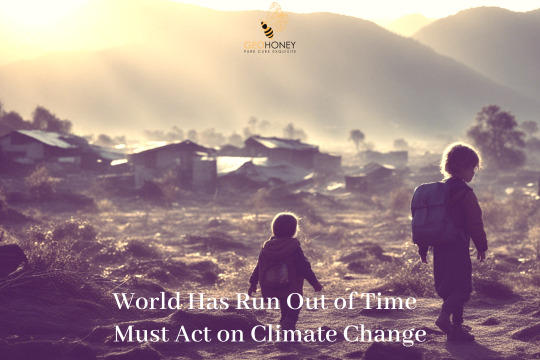
Join the global movement for a greener tomorrow.🌍 Read the full blog here:https://blog.geohoney.com/world-must-act-on-climate-change-immediately
11 notes
·
View notes
Text
Electric Vehicles: A Cleaner, Greener Future of Transportation
Electric vehicles (EVs) are revolutionizing the way we move, offering a more sustainable and eco-friendly alternative to traditional gasoline-powered cars. This title and description provide an overview of the significance of electric vehicles and their potential to transform transportation
2 notes
·
View notes
Text
AIDGC: Pioneering Safety in Handling Dangerous Goods
In a world where hazardous materials play an integral role in various industries, safety must remain a top priority. The Australian Institute of Dangerous Goods Consultants (AIDGC) is at the forefront of revolutionizing how businesses handle dangerous goods. Their unique approach to promoting safety, compliance, and education sets them apart as industry leaders. Let’s explore how AIDGC is making a difference and fostering a culture of responsibility in handling dangerous goods.
Unmatched Expertise:
AIDGC’s team of seasoned consultants brings unparalleled expertise to the table. With years of hands-on experience and in-depth knowledge of regulations, they offer reliable guidance to businesses dealing with dangerous goods. From chemicals to flammable substances, AIDGC’s consultants know the intricacies of each industry, ensuring the safe handling and transportation of hazardous materials.
Tailored Solutions for Every Business:
Recognizing that one size doesn’t fit all, AIDGC provides customized solutions for businesses of all sizes and industries. Their approach is flexible, addressing unique challenges and specific needs. AIDGC works closely with clients to develop comprehensive safety strategies, enhancing their risk management practices and promoting a safety-first culture.
Proactive Safety Training:
Preventing accidents starts with education. AIDGC conducts cutting-edge training programs that empower employees with the knowledge and skills to handle dangerous goods responsibly. From theoretical understanding to practical simulations, the training equips personnel to react appropriately during emergencies, minimizing potential risks.
Embracing Innovation:
AIDGC embraces technological advancements to optimize safety measures further. They keep themselves updated on the latest industry trends and incorporate innovative solutions into their consultancy services. By leveraging modern technology, AIDGC ensures businesses stay ahead of the curve in hazardous materials management.
Sustainable Practices:
Safety and sustainability go hand in hand. AIDGC emphasizes the importance of environmentally responsible practices in handling dangerous goods. Their consultants work with businesses to adopt eco-friendly approaches, reducing their impact on the environment and contributing to a greener future.
Conclusion:
When it comes to handling dangerous goods, AIDGC stands as a beacon of expertise and innovation. Their unique approach to safety, tailored solutions, proactive training, and commitment to sustainability have earned them a reputation as pioneers in the industry. Collaborating with AIDGC empowers businesses to navigate hazardous materials responsibly, safeguarding their employees, communities, and the planet. By choosing AIDGC, you choose a safer and more sustainable future for your business and the world.
#AIDGC#Compliance#Dangerous Goods Consultants#Environmentally Responsible#Expertise#Greener Future#Handling Dangerous Goods#Hazardous Materials Management#Hazardous Materials safety#Innovative Solutions#Proactive Safety Training#Regulations#Risk Management#Safety in Handling Hazardous Materials#Safety Strategies#Safety-first Culture#Sustainable Practices#Tailored Solutions#Technological Advancements
3 notes
·
View notes
Photo
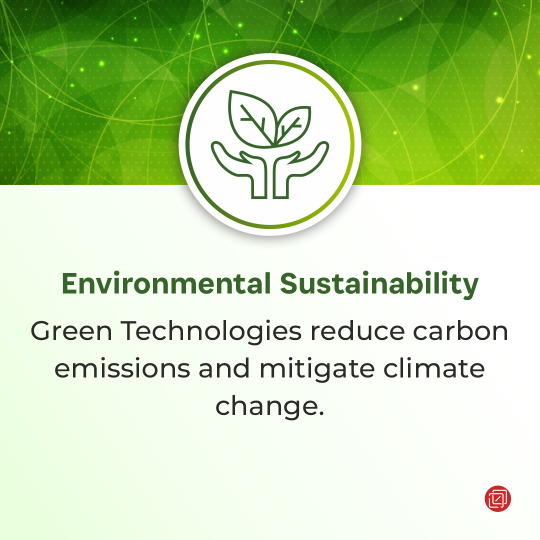

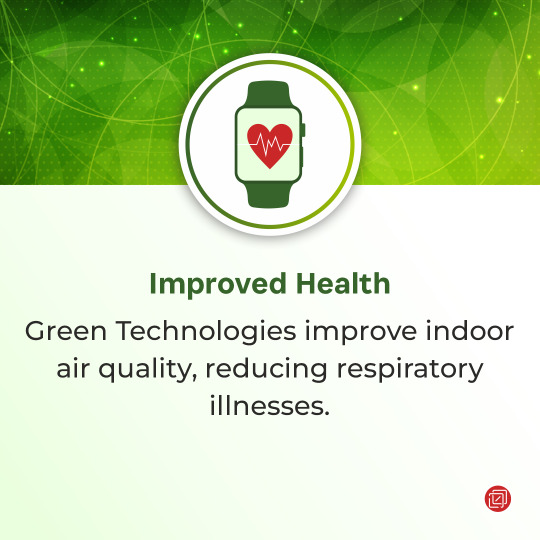
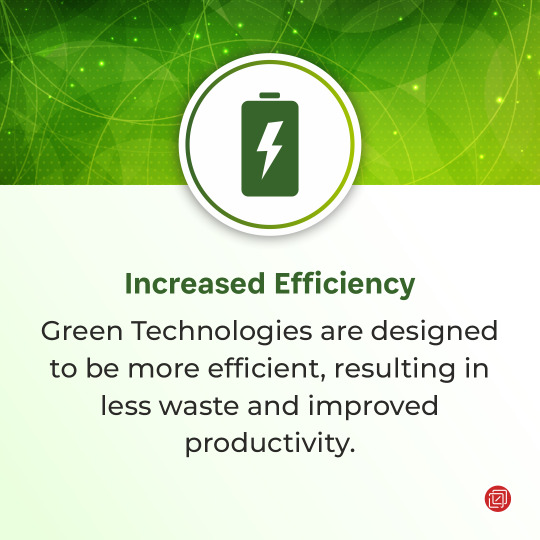
Saving the planet starts with us - and that's where Green Technologies come in! 🌍💻
From renewable energy sources to sustainable manufacturing processes, these technologies are leading the way toward a greener future. 🌿 Learn more about how you can make a difference today.
#save planet#green technology#sustainable#greener future#environmental sustainability#cost savings#improved health#increased efficiency
5 notes
·
View notes
Text
(3rd High-Level Meeting of International Organizations) 6th World Forum on Intercultural Dialogue.
"Sustainable Pathways for a Greener Future: Collaborative Actions for COP29 and Beyond"
Keynote speaker:
H.E. Mukhtar Babayev, Minister of Ecology and Natural Resources of the Republic of Azerbaijan
Mr. Yalchin Rafiyev, COP29 Lead Negotiator
Moderator:
Ms. Fiona Harvey, Journalist and environmental editor of the Guardian
Speakers:
High officials of the International Organizations
Related Sites and Documents
6th World Forum on Intercultural Dialogue website
Baku Process Home Page
Watch the (3rd High-Level Meeting of International Organizations) 6th World Forum on Intercultural Dialogue
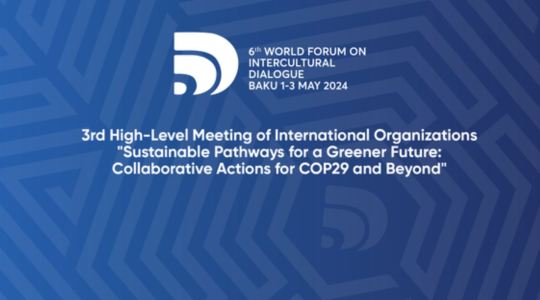
#dialogue for peace#intercultural dialogue#intergenerational dialogue#cop29#greener future#sustainable pathways#collaborative actions#world forum on intercultural dialogue#unesco#unaoc
0 notes
Text
A Heartfelt Thanks to SaskTel's sponsorship
A Heartfelt Thanks to SaskTel: Leading the Way in Environmental Sustainability
In the bustling city of Saskatoon, amidst the urban landscape, lies a vibrant tapestry of nature waiting to be explored. Thanks to the generous support of SaskTel, the City Nature Challenge Saskatoon 2024 (CNC YXE 2024) has flourished, inviting residents to connect with the natural world in their own backyard. As we…

View On WordPress
#2023#beacon of inspiration#Big Green Footprint program#businesses#Canada&039;s Greenest Employers#City Nature Challenge Saskatoon 2024#CNC YXE 2024#commitment#community#Community Engagement#Eco-friendly Practices#Ecological Strategy#empowerment#environmental footprint#environmental leaders#environmental stewardship#environmental sustainability#Future generations#George Genereux Urban REgional Park#gratitude#greener future#individuals#initiatives#meaningful change#Nature#non-profit organizations#planet#province#residents#Richard St. Barbe Baker AFforestation ARea
0 notes
Text
Sharp Philippines launches a Greener Future campaign
The entire world is being seriously impacted by climate change, not just the Philippines. Due to the adverse climate, we are already feeling its impacts. The international community has realized how urgently pressing it is to solve increasing environmental issues.
In this situation, Sharp Corporation, through Sharp (Philippines), formulated Eco Vision 2050, a long-term environmental vision with…

View On WordPress
0 notes
Text
Mexico wrestles with its oil legacy. While relying on fossil fuels, it eyes a greener future with electromobility. Rep. Acevedo's commission grapples with economic realities and the urgent need for climate action.
#mexico#mexicanist#oil legacy#fossil fuels#greener future#green future#electromobility#economic realities#climate action
0 notes
Text
Creating A Greener Future with Sustainable Farming
Introduction
Welcome to our blog post on creating a greener future with sustainable farming. In this article, we will explore the importance of sustainable farming practices and how they contribute to a healthier environment. We will also discuss the benefits of organic farming for health-conscious consumers and the positive impact it has on supporting local businesses. Join us on this journey…
View On WordPress
#Conservation of natural resources#environmental preservation#greener future#health-conscious consumers#organic farming#preservation of biodiversity#promoting a greener future#reduction of chemical inputs#supporting local businesses#sustainable farming
0 notes
Text
Understanding the Environmental Impact of Household Chemicals
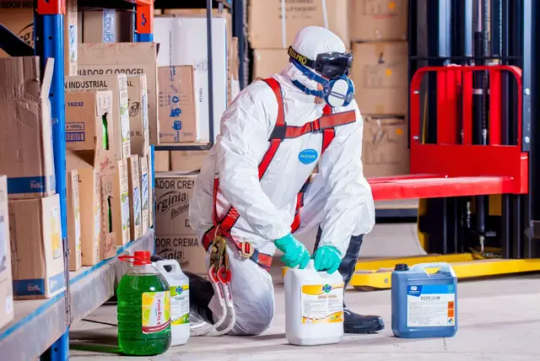
At GoGoNano, we are committed to shedding light on the environmental impact of household chemicals and empowering consumers to make conscious choices. In this article, we will delve into the various aspects of household chemicals and their effects on the environment. Our comprehensive research aims to provide readers with valuable insights and a deeper understanding of this critical issue.
Introduction: The Hidden Dangers in Everyday Products
Household chemicals are ubiquitous in our lives, found in everything from cleaning products to personal care items. While they play a vital role in our daily routines, the impact of these chemicals on the environment often goes unnoticed.
The Scope of Household Chemicals
Household chemicals encompass a broad range of substances, including cleaning agents, pesticides, air fresheners, and personal care products. These chemicals contain various synthetic compounds designed to fulfill specific functions efficiently.
1. Cleaning Agents
Cleaning agents, such as bleach, disinfectants, and detergents, are commonly used to maintain cleanliness and hygiene in our homes. However, some of these agents contain harmful substances that can have adverse effects on the environment.
2. Pesticides
Pesticides are widely used to control pests and insects in and around our homes. While they can effectively eliminate unwanted intruders, their residue can seep into the soil and water, posing a threat to wildlife and ecosystems.
3. Air Fresheners
Air fresheners are designed to create a pleasant ambiance in indoor spaces. Unfortunately, many air fresheners contain volatile organic compounds (VOCs) that contribute to indoor air pollution and, in some cases, can lead to respiratory issues.
4. Personal Care Products
Personal care products like shampoos, soaps, and lotions often contain synthetic chemicals that, when washed down the drain, find their way into water bodies and have the potential to harm aquatic life.
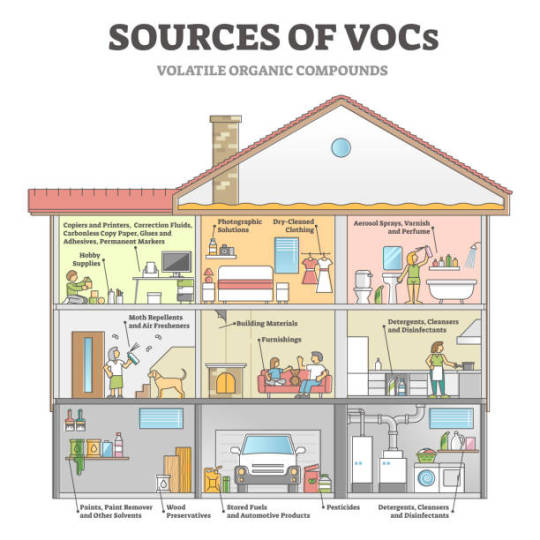
Environmental Impact: Unraveling the Consequences
The use of household chemicals has far-reaching implications for the environment. Understanding these consequences is crucial in making informed choices.
1. Water Contamination
One of the most significant environmental concerns related to household chemicals is water contamination. When these chemicals are disposed of improperly or flushed down the drain, they can infiltrate groundwater or enter rivers and lakes, adversely affecting aquatic ecosystems.
2. Air Pollution
Certain household chemicals release harmful VOCs into the air, contributing to indoor and outdoor air pollution. Prolonged exposure to these pollutants can have detrimental effects on human health and the environment.
3. Soil Degradation
Chemicals from cleaning agents and pesticides can accumulate in the soil, leading to soil degradation and reduced fertility. This can impact plant growth and disrupt natural ecosystems.
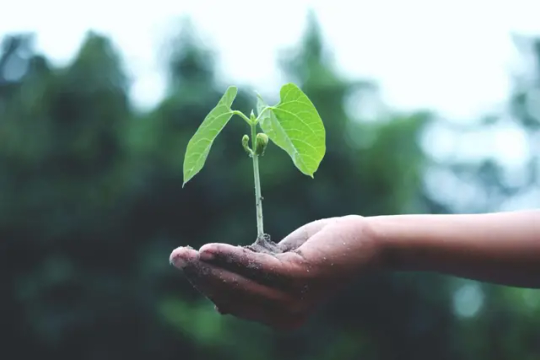
Taking Action: Making Environmentally Friendly Choices
As concerned citizens, we can take several steps to mitigate the environmental impact of household chemicals:
1. Read Labels Carefully
Before purchasing any household chemical, carefully read the product labels. Look for eco-friendly and biodegradable options that are less harmful to the environment.
2. Reduce Single-Use Products
Opt for reusable and refillable containers whenever possible, reducing the need for excessive single-use packaging.
3. DIY Cleaning Solutions
For a more eco-friendly approach to cleaning, we recommend considering the use of GoGoNano cleaning products. However, if you prefer a do-it-yourself (DIY) approach, you can still make conscious choices by creating cleaning solutions with natural ingredients like vinegar, baking soda, and essential oils.
While these alternatives are effective in keeping your home clean, they also have the added benefit of being safer for both the environment and your health. Nevertheless, for a hassle-free and highly effective cleaning experience, GoGoNano home hygiene products offer a sustainable and eco-conscious solution that aligns with your commitment to a greener lifestyle.
4. Proper Disposal
Always dispose of household chemicals according to local regulations. Many communities have specific guidelines for hazardous waste disposal.
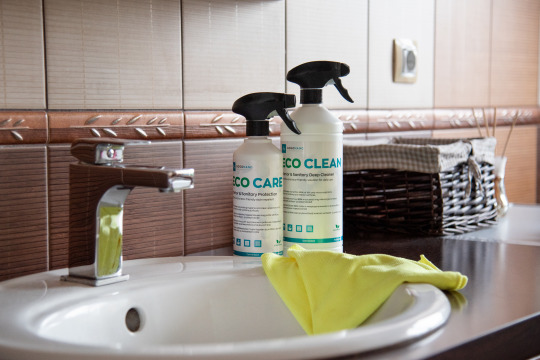
Conclusion: A Greener Future
In conclusion, the impact of household chemicals on the environment is a matter of great concern. By raising awareness and making informed choices, we can collectively work towards a greener and more sustainable future. Let us take responsibility for our actions and safeguard the environment for generations to come. At GoGoNano, we are committed to providing eco-conscious solutions and promoting environmentally friendly practices.
Together, we can make a difference and create a healthier planet for all.
#greener future#household chemicals#diy#cleaning#cleaning guide#ecofriendly#sustainability#environment#climate#vocs#nanotechnology#green chemistry
0 notes
Text
The Rise of Sustainable Architecture: Building a Greener Future
Balancing Innovation and Environmental Responsibility
As concerns for the environment continue to grow, the world of architecture is undergoing a transformative shift towards sustainable practices. Sustainable architecture aims to minimize the negative impact on the planet while creating functional, aesthetically pleasing, and energy-efficient structures. In this article, we delve into the…
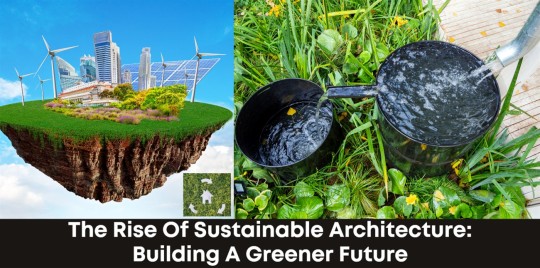
View On WordPress
#adaptive reuse#collaborative design#community integration#daylighting#education#environmental stewardship#green building#green materials#greener future#life-cycle assessment#natural ventilation#rainwater harvesting#renewable energy#resource efficiency#sustainable architecture#sustainable landscaping
0 notes
Text
Hi, yes, hello.
It's your local nutcase.
I want to talk about something, but it might be a punch in the gut to some, upset someone, others will not care, and/or others will maybe have a realization.
It's not really anything bad and it doesn't have anything to do with BTS or writing and you're not obligated to read it, but feel free to. It's just a reminder.
Something👇
Long term followers will know that I'm a BIG advocate for R(educe) R(euse) R(ecycle).
Remember to assist and work towards a greener future. We don't want a future like the inhabitable dystopia in Wall-E.
I will continue to help as much as I can and will spread the word.
Thank you.🌱
1 note
·
View note
Text
Clean Energy Dilemma
1 note
·
View note
Text
Navigating the World of Toxic and Infectious Substances: A Class 6 Insight
Introduction: Welcome, curious minds, to a riveting exploration of Class 6 substances – the realm of toxic and infectious materials. In this blog post, we will delve into the fascinating world of chemicals and biological agents that pose risks to our health and the environment. Buckle up as we navigate through the classifications, regulations, and the importance of handling these substances with the utmost care.Understanding Class 6: Class 6 substances, as defined by various regulatory bodies such as the United Nations for transportation and the Globally Harmonized System of Classification and Labelling of Chemicals (GHS), encompass toxic and infectious materials. These can range from chemicals causing acute toxicity to infectious substances capable of causing harm to living organisms.Subdivisions of Class 6: Class 6 is further divided into two main divisions:
Division 6.1 – Toxic Substances:
Toxic substances are those that can cause harm to living organisms through ingestion, inhalation, or skin contact.These substances are classified based on their acute toxicity, which is the ability to cause immediate harm upon exposure.Proper labeling and packaging are crucial when transporting toxic substances to ensure the safety of handlers and the public.
Division 6.2 – Infectious Substances:
Infectious substances include pathogens such as bacteria, viruses, and fungi capable of causing diseases in humans, animals, or plants.These substances are classified into different categories based on their potential to cause harm and their mode of transmission.Stringent regulations and guidelines govern the packaging, labeling, and transportation of infectious substances to prevent the spread of diseases.
Regulatory Framework: The transportation and handling of Class 6 substances are tightly regulated globally to mitigate risks and protect human health and the environment. Organizations such as the UN and GHS provide guidelines for the classification, labeling, and packaging of these materials. Compliance with these regulations is essential to ensure the safe transport and use of toxic and infectious substances.Importance of Proper Handling: Understanding the potential risks associated with Class 6 substances highlights the importance of proper handling. This includes:
Wearing appropriate personal protective equipment (PPE).Implementing proper storage and containment measures.Adhering to established protocols for disposal and decontamination.
Conclusion: In conclusion, Class 6 substances constitute a critical category that demands our attention and diligence. Whether it’s toxic materials with the potential for immediate harm or infectious substances capable of spreading diseases, responsible handling and adherence to regulations are paramount. As we continue to unravel the mysteries of the microscopic and chemical worlds, let us do so with a keen awareness of the importance of safeguarding ourselves and our environment from the potential hazards these substances pose. Stay informed, stay safe!
#dangerous goods consultants#hazardous materials management#handling dangerous goods#compliance#environmentally responsible#greener future#hazardous materials safety
0 notes
Text


Matchy Matchy Husbands
#louis tomlinson#harry styles#larry stylinson#larry#fitf#fitfwt#larry is real#hslot#faith in the future#faith in the future world tour#blue green#blue greener
62 notes
·
View notes
Text

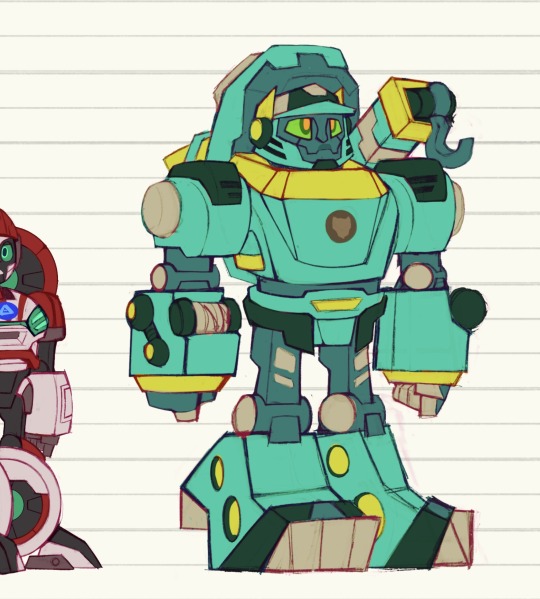
HOIST IS HERE!! You know what that means? I only have Slash to draw before I have officially finished Rescue teams One and Two!!!
#I was going to go with a more greener color but I just ended right back with a light blueish teal#OH I ALSO CHANGED THE YELLOWS#I changed the yellows on Prince Brushfire Whirl and Wedge#it was bothering me how I kept using the same bright mustard yellow#also side note I just realized with each new design I keep making them more and more detailed as I go#and I have no idea how that’s going to translate into future pieces#tf fan continuity#transformers bold bright brisk#rescue bot recruits#transformers#maccadam#maccadams#artsy fartsy#my art#whirl jr#hotshot#wedge#medix#hoist
63 notes
·
View notes